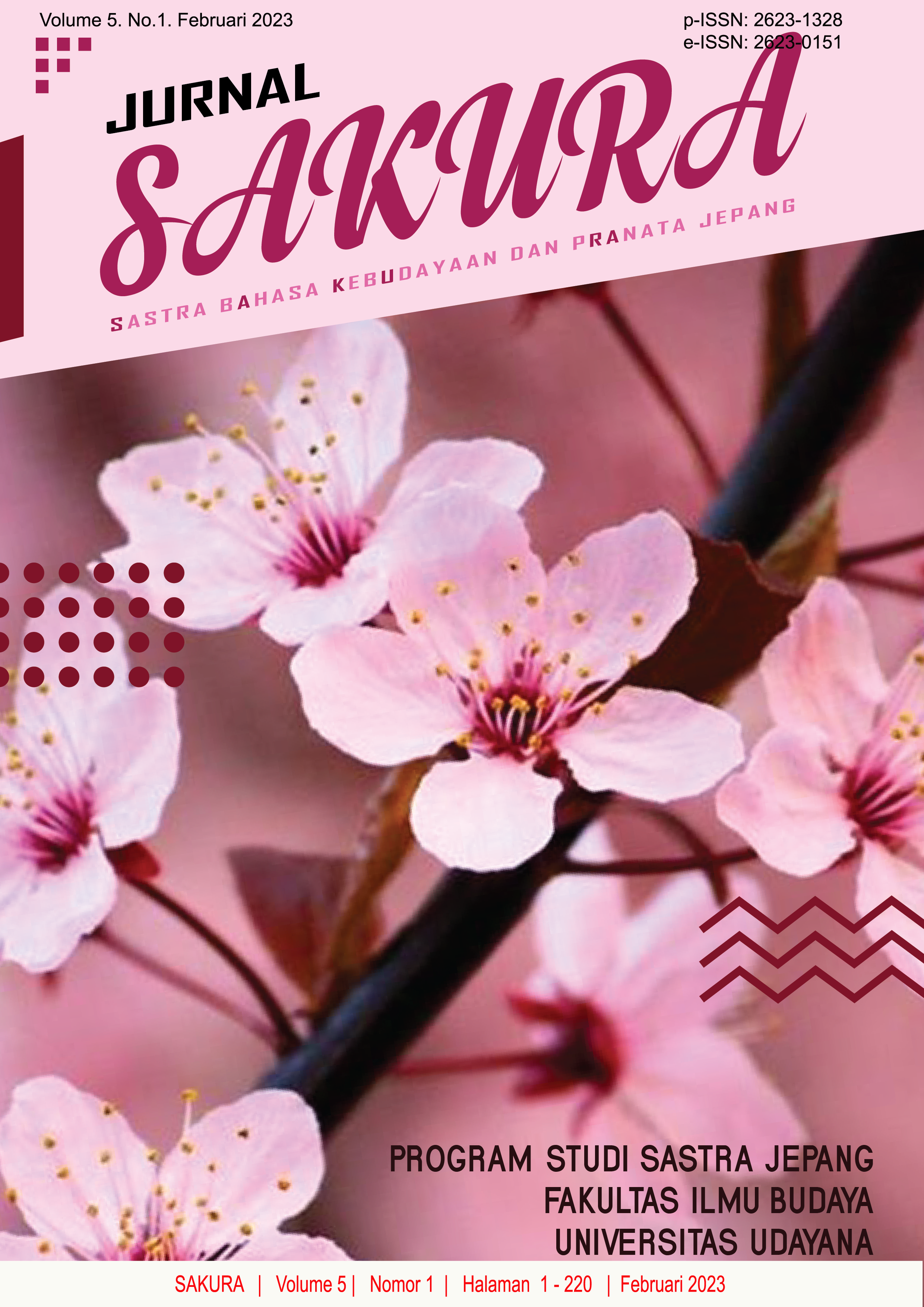Fenomena Hikonka dalam Drama Dokushin Kizoku Karya Shimako Sato
Abstract
This research is entitled "The Hikonka Phenomenon in the Drama Dokushin Kizoku by Shimako Sato". This study aims to determine the phenomena, causes and effects of hikonka as reflected in the drama Dokushin Kizoku by Shimako Sato.The method used in this research is descriptive analysis method. This study uses the theory of sociology of literature according to Wellek and Warren (2013) and the theory of semiotics according to Danesi (2010). Based on the results of the study, the hikonka phenomenon reflected in Shimako Sato's drama Dokushin Kizoku is depicted in several characters in the drama who are not married at an age that has passed the general limit. The factors that cause the hikonka phenomenon in the drama Dokushin Kizoku are (1) the factor of not believing in love, (2) deciding not to marry, (3) not being able to commit, (4) being more comfortable living alone, (5) don't want to have children.
Downloads
References
Danesi, M (2010). The Semiotics of Emoji: The Rise of Visual Language in the Age of the Internet . Bloomsbury Publishing
Jayanti, R.Z & Masykur, A.M. (2015). ‘Pengambilan Keputusan Belum Menikah pada Dewasa Awal. Jurnal Empati.’ 4(4), hlm. 250-254.
Mahfuzhatillah, K. F. (2018). ‘Studi Faktor- Faktor yang Mempengaruhi Menunda Menikah Pada Wanita Dewasa Awal.’ Jurnal Ittihad, 11(1), hlm. 1-9.
Minami. (2019). Hikonka no Shakai Mikon kara Hikon e: Meiji University.
Nakano, Lynne, and Wagatsuma, Moeko. (2004). Japan’s Changing Generation: Mothers and Their Unmarried Doughters An Intimate Look At Generational Change. London, RoutldgeCurzon.
Puspa, Yulita. (2018). ‘Hipnoterapi Teknik Part Therapy Untuk Menangani Siswa Kecewa Akibat Putus Hubungan Cinta Pada Siswa Sekolah Menengah Kejuruan.’ Jurnal PINUS. Vol 4.
Raymo, J.M. (2015). Living Alone in Japan. Demographic Research. 32(46), hlm. 1267-1298.
Raymo, dkk. (2021). ‘Marriage Intentions, Desires, and Pathways to Later and Less Marriage in Japan.’ Demographic Research, 44(3), hlm. 69-70.
Robinson, K. dan Bessell, S. (2002) Women in Indonesia: Gender, equity, and development. Pasir Panjang: Institute of South East Asian Studies. Saguni, F. (2014). Pemberian Stereotipe Gender. Jurnal Musawa. 6(2), hlm. 203.
Sudaryanto. (2015). Metode dan Aneka Teknik Analisis Bahasa (Pengantar Penelitian Wahana Kebudayaan Secara Linguistis). Yogyakarta: Duta Wacana University Press.
Susanti, N.I. (2014). Pernikahan Dilihat Dari Sudut Pandang Enam Pria Single Jepang di Jakarta. Jurnal Japanology. 2(1), hlm. 8-15.
Tachibanaki, T. (2010). The new paradox for Japanese women: Greater choice, greater inequality. Japan: International House of Japan.
Werren, A & Wellek, R. (1970). Theory of Literature. England : Penguin Books
Widarahesty, Y. (2018). ‘Fathering Japan: Diskursus Alternatif dalam Hegemoni Ketidaksetaraan Gender di Jepang.’ Jurnal Kajian Wilayah, 9(1), hlm. 63-64.
Wiyatmi. 2013. Teori dan Kajian Sosiologi Sastra. Yogyakarta: Kanwa Publisher.













